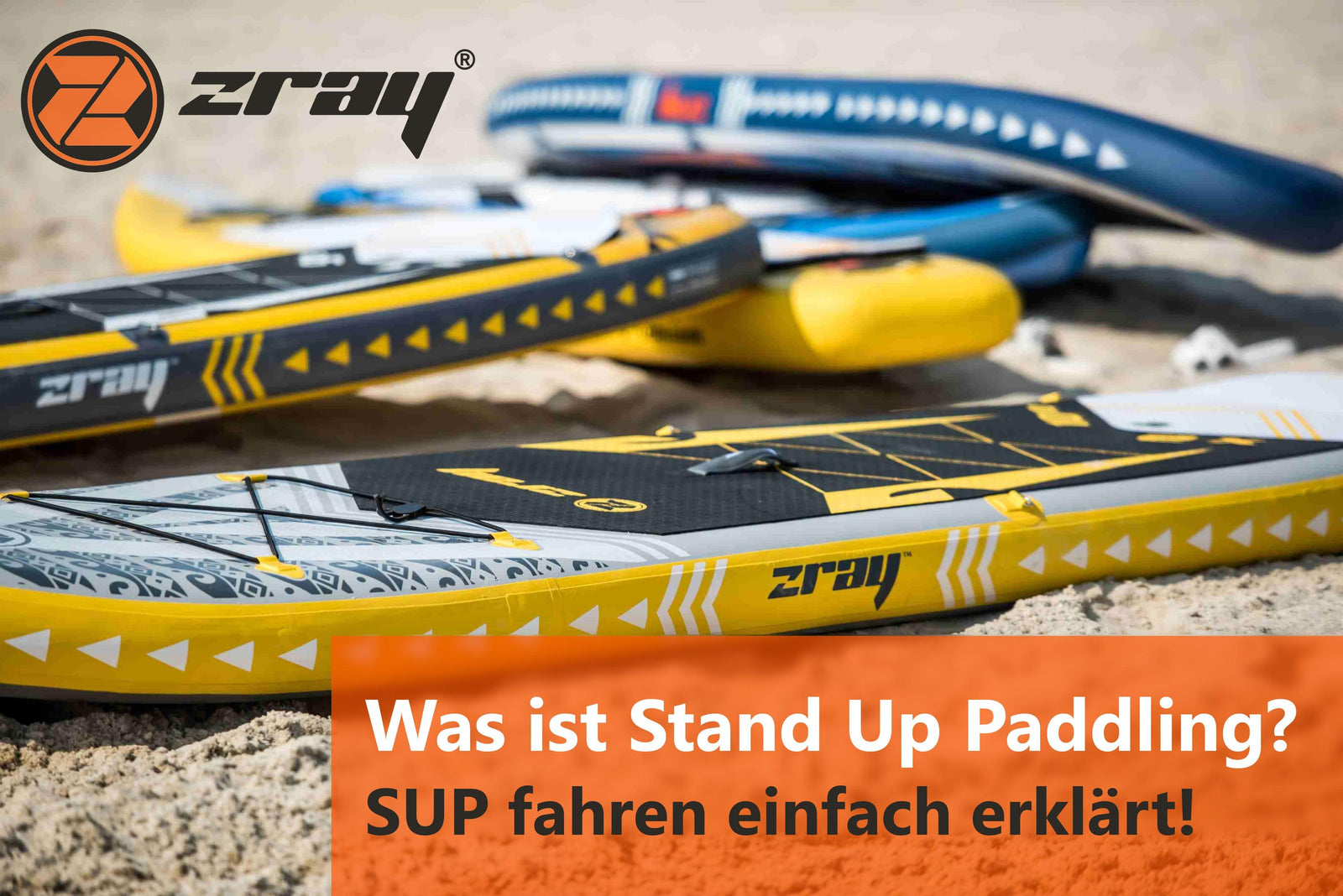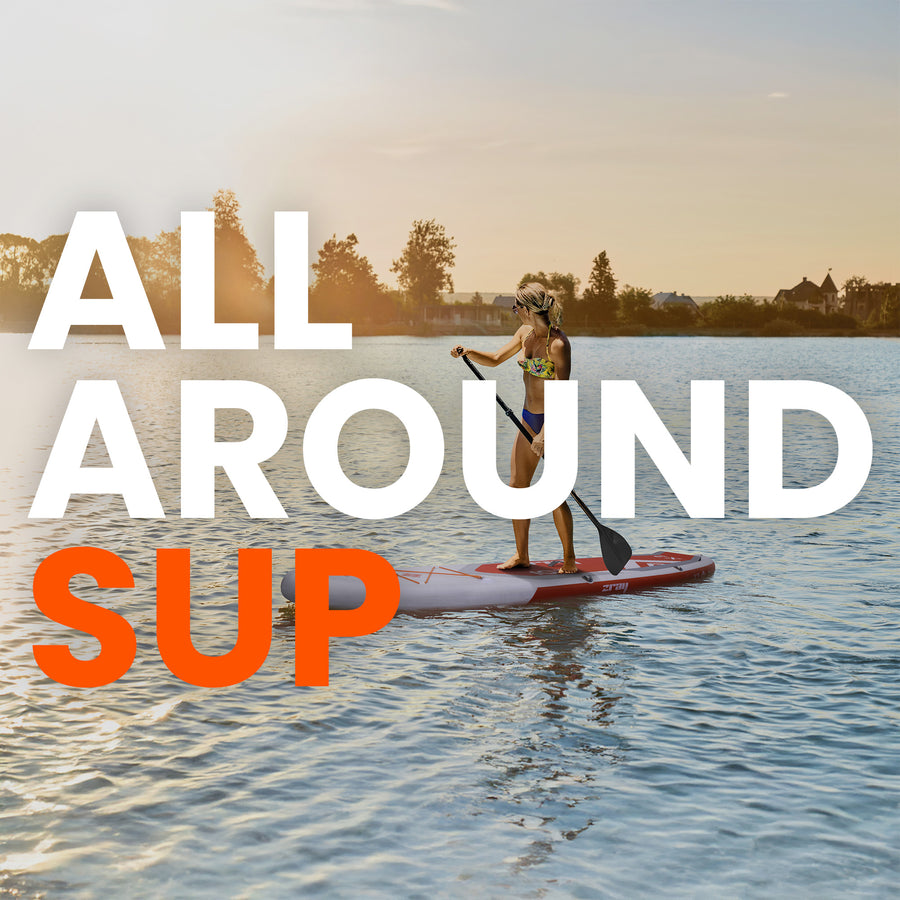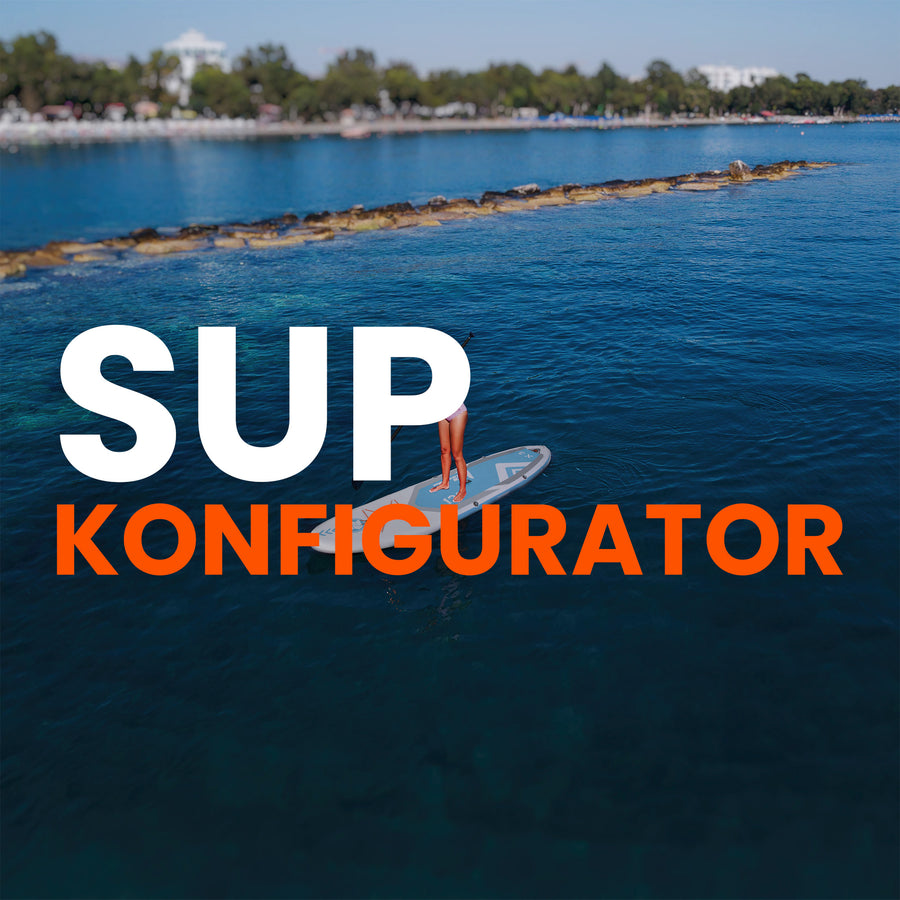What is stand-up paddling?

Stand Up Paddling (SUP) – Everything you need to get started
Introduction
Stand-up paddling, or SUP for short, is one of the most versatile water sports that's captivating more and more people. The idea is simple: You stand on a board and move forward using a paddle. But to really get into this sport, you need not only the right technique but also the right equipment. In this article, you'll learn exactly what SUP is and what equipment you need to get started right away.
What is SUP anyway?
SUP is a water sport where you stand on a special, stable board and propel yourself with a long paddle. Unlike surfing, you don't need waves – SUP works on calm lakes, rivers, and the ocean. Originally originating in Polynesia and popularized in Hawaii, the sport now enjoys widespread popularity worldwide. For many, SUP is not just a sport, but a way to enjoy nature, relieve stress, and improve physical fitness.
What you need to get started with SUP
To get started with stand-up paddling, you need the right basic equipment. Here are the most important items:
The SUP board
The SUP board is the heart of your equipment. There are different types of boards, which are selected depending on the intended use and riding ability. Beginners benefit from wider and more stable all-around boards that are particularly easy to maneuver and offer high stability. Advanced paddlers often opt for touring or race boards, which are narrower and longer to achieve higher speeds and better gliding. A popular brand among SUP riders is Zray, which offers boards in various designs and for different purposes. Zray boards are characterized by stability and quality, making them a good choice for beginners and advanced paddlers.
The paddle
The paddle is your most important tool for propulsion. It typically consists of a long shaft with a handle at one end and a blade at the other. The ideal paddle length depends on your height and desired paddling technique—a general rule of thumb is that the paddle should be about 15-20 cm longer than your height. Many paddles are height-adjustable, allowing you to adjust them to your needs.
The leash (safety line)
A leash is a safety cord that attaches to your ankle or below your knee and connects you to your board. If you fall off, the leash prevents the board from drifting away, especially on open water or in windy conditions. It's an essential accessory that ensures your safety and helps you get back on your board quickly in the event of a fall.
Life jacket or buoyancy aid
Even though SUPing often takes place in calm waters, a life jacket or buoyancy aid is a useful addition to your gear. It provides additional protection and is especially important for beginners or on open waters. Even experienced paddlers should pay attention to safety and always wear a buoyancy aid to stay safe in the water.
Proper clothing and sun protection
Depending on the weather and water temperature, the right clothing is crucial. On warm days, swimwear or functional clothing that dries quickly and allows for freedom of movement is often sufficient. In colder waters or on windy days, a wetsuit is recommended to keep you warm. Don't forget sun protection – a hat and waterproof sunscreen are especially important on the water, as the sun reflects strongly off the water's surface.
Additional accessories
In addition to the basic equipment, there are other accessories that can make your SUP experience more comfortable and safer. A waterproof bag is useful for keeping valuables dry, and an air pump for inflatable boards is also essential.
Conclusion
SUP is an exciting and versatile sport suitable for beginners and experienced water sports enthusiasts alike. With a stable board like those from Zray and the right equipment, you can get started right away and enjoy your first paddle strokes on the water. Pay attention to safety, the right technique, and appropriate clothing – nothing will stand in the way of a relaxed and successful SUP experience!









